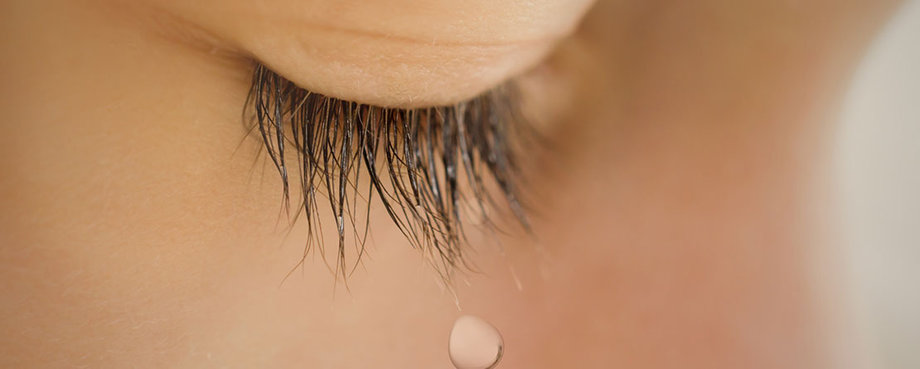What Is the Role of Tears in Preventing Dry Eye

Tears play a crucial role in maintaining the health and well-being of the eyes. This article aims to explore the significance of tears in preventing dry eye, a common ocular condition characterized by insufficient lubrication and discomfort.
By examining the composition of tears, their lubricating and protective properties, as well as their influence on tear production, tear film stability, and tear drainage, we can gain a comprehensive understanding of how tears contribute to the prevention of dry eye.
The objective and impersonal approach adopted in this article aims to provide an unbiased and informative analysis of this topic.
Key Takeaways
- Tears play a crucial role in preventing dry eye by maintaining a smooth ocular surface and preventing tear evaporation.
- Tear production disorders, caused by factors such as hormonal imbalances, systemic diseases, medications, aging, and environmental factors, can lead to dry eye symptoms.
- Tear film stability is important for preventing dry eye symptoms, and factors such as evaporative loss and inadequate lipid layer can disrupt tear film stability.
- Proper tear drainage is necessary to maintain a balanced tear volume and prevent excessive tearing or dry eye symptoms. Conservative measures like warm compresses and lid massage can help improve tear drainage, while advanced interventions such as tear duct probing or surgery may be necessary in some cases. Regular follow-up and evaluation of tear drainage are important for effective management.
The Composition of Tears and Its Importance
The composition of tears and its importance in preventing dry eye are significant areas of study in understanding the role of tears in ocular health.
Tears are composed of a complex mixture of proteins, lipids, electrolytes, and water.
The tear film serves as a protective layer on the ocular surface and plays a crucial role in maintaining ocular health.
The tear film composition is important for tear film stability, as it helps to prevent evaporation and maintain a smooth and clear ocular surface.
The proteins in tears, such as lysozyme and lactoferrin, have antimicrobial properties and help to protect against infection.
Lipids in tears form a lipid layer that reduces tear evaporation and maintains tear film stability.
Understanding the composition of tears and its role in tear film stability is essential for developing effective treatments for dry eye syndrome.
How Tears Lubricate and Protect the Eyes
Adequate lubrication and protection of ocular surfaces are facilitated by the presence of tear film. Tears play a crucial role in tear production, as they are produced by the lacrimal glands and are composed of water, proteins, lipids, electrolytes, and mucins.
Tear film stability is essential for maintaining ocular health and preventing dry eye. When tear film is unstable, such as in cases of insufficient tear production or rapid tear evaporation, it can lead to dry eye syndrome. Dry eye is characterized by symptoms such as dryness, burning, itching, and blurred vision.
Tears not only lubricate the eyes but also help to wash away debris, provide nutrients to the epithelial cells, and protect against infection. Therefore, maintaining a healthy tear film is crucial for ocular health and preventing dry eye.
The Role of Tears in Maintaining Eye Health
Tear composition and function play a crucial role in maintaining eye health. Tears are a complex mixture of water, electrolytes, proteins, and lipids that help lubricate and protect the eyes.
Their function extends beyond just providing moisture, as tears also help in nourishing the cornea, removing debris, and preventing infection.
The importance of tear production cannot be understated, as inadequate tear production can lead to various eye conditions such as dry eye syndrome and corneal damage.
Tear Composition and Function
Comprehensive understanding of tear composition and function provides valuable insights into the mechanisms involved in preventing dry eye.
The tear film structure is composed of three layers: the outer lipid layer, the middle aqueous layer, and the inner mucin layer. The lipid layer helps to prevent tear evaporation by forming a barrier on the ocular surface.
The aqueous layer provides nutrients and oxygen to the cornea and removes waste products. The mucin layer helps to distribute the tears evenly over the ocular surface.
Tear evaporation is a common cause of dry eye, and the tear film’s composition plays a crucial role in preventing this. By maintaining a proper balance of lipids, aqueous, and mucin, the tear film can effectively lubricate and protect the eyes from dryness and irritation.
Importance of Tear Production
The production of tears is a vital physiological process essential for maintaining ocular health and lubrication. Tears provide numerous benefits, such as protecting the cornea from infections, removing debris and foreign particles, and promoting clear vision by maintaining a smooth and optically effective surface. Tear production is regulated by a complex interplay of factors, including neural and hormonal pathways. The lacrimal gland, located in the upper outer corner of the eye, plays a crucial role in tear production. Additionally, the meibomian glands and goblet cells contribute to tear film stability and quality. Various factors can influence tear production, such as age, hormonal changes, environmental conditions, and certain medical conditions. Understanding these factors can help in managing dry eye and maintaining ocular health.
| Tear Production Benefits | Tear Production Factors | Tear Production Factors |
|---|---|---|
| Protects the cornea from infections | Neural pathways | Age |
| Removes debris and foreign particles | Hormonal pathways | Hormonal changes |
| Promotes clear vision | Lacrimal gland | Environmental conditions |
| Maintains a smooth and optically effective surface | Meibomian glands | Medical conditions |
Tear Production and Its Impact on Dry Eye
Conjunctival goblet cells play a crucial role in maintaining ocular surface health by secreting mucins, which contribute to tear film stability and help prevent dry eye. Tear production is regulated by a complex interaction between the lacrimal glands, meibomian glands, and goblet cells.
Dysfunction in any of these components can lead to tear production disorders, such as inadequate tear volume or poor tear film quality. Factors that can affect tear production regulation include hormonal imbalances, systemic diseases, medications, aging, and environmental factors.
Tear production disorders can result in symptoms of dry eye, such as ocular discomfort, foreign body sensation, and blurred vision. Understanding the mechanisms involved in tear production regulation is crucial for the development of effective treatments for dry eye.
Tear Film Stability and Its Role in Preventing Dry Eye
One factor that contributes to ocular surface health is the stability of the tear film, which is important in maintaining proper lubrication and preventing discomfort. The tear film is a complex structure composed of three layers: the outer lipid layer, the middle aqueous layer, and the inner mucin layer. Each layer has a specific role in tear film stability and functionality. The outer lipid layer helps to reduce tear evaporation by providing a barrier to the aqueous layer. The middle aqueous layer contains various proteins, electrolytes, and growth factors that nourish and protect the ocular surface. The inner mucin layer ensures the even distribution of tears over the ocular surface. When the tear film is stable, it coats the ocular surface evenly, allowing for clear vision and preventing dry eye symptoms.
| Tear Film Layer | Composition |
|---|---|
| Outer lipid layer | Meibomian gland secretions, cholesterol, fatty acids |
| Middle aqueous layer | Water, electrolytes, proteins, growth factors |
| Inner mucin layer | Mucins, glycoproteins |
Tear Drainage and Its Influence on Dry Eye
Tear drainage plays a significant role in maintaining ocular surface health by removing excess fluid and waste products from the eye. Proper tear drainage management is crucial in preventing conditions such as dry eye.
The tear drainage system consists of several components, including the tear ducts (also known as lacrimal ducts) which are responsible for collecting tears from the ocular surface and transporting them to the nasal cavity.
Here are four important points to consider regarding tear drainage:
- Tear ducts help maintain the proper balance of tears on the ocular surface, preventing dryness and discomfort.
- Obstruction or dysfunction of the tear ducts can lead to poor tear drainage, resulting in excessive tearing or dry eye symptoms.
- Tear drainage management may involve conservative measures such as warm compresses and lid massage, or more advanced interventions like tear duct probing or surgery.
- Regular evaluation and appropriate management of tear drainage are essential for maintaining ocular surface health and preventing dry eye symptoms.
Frequently Asked Questions
How Do Tears Actually Prevent Dry Eye?
Tears play a crucial role in preventing dry eye by maintaining the health and lubrication of the ocular surface. The tear film, composed of water, lipids, and proteins, provides a protective barrier, nourishes the cornea, and ensures proper vision.
What Factors Can Affect Tear Production?
Factors that can affect tear production include environmental conditions, such as humidity and air quality, as well as certain medications and medical conditions. Other factors may include age, hormonal changes, and ocular surface disorders.
Can Tears Help With Other Eye Conditions Besides Dry Eye?
Tears have been found to have potential therapeutic benefits beyond preventing dry eye. Research suggests that tears may play a role in treating glaucoma and preventing the development of cataracts.
Is There a Difference Between Emotional Tears and Tears Produced to Lubricate the Eyes?
The distinction between emotional tears and tears produced for lubrication is relevant to understanding tear production and its role in preventing dry eye. Further exploration is necessary to fully comprehend this differentiation and its implications for ocular health.
Are There Any Natural Remedies or Lifestyle Changes That Can Help Improve Tear Production?
Natural remedies and lifestyle changes can potentially improve tear production. These interventions may include increasing water intake, using warm compresses, practicing good eyelid hygiene, avoiding environmental irritants, and consuming foods rich in omega-3 fatty acids.









